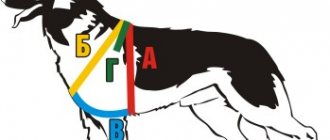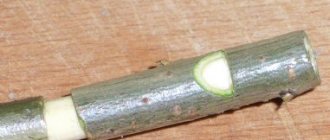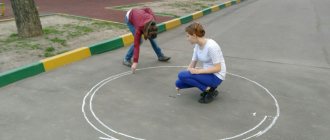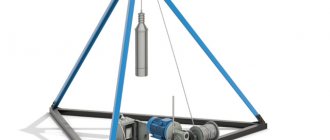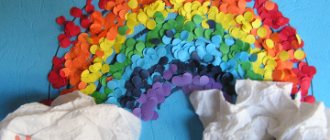How to make chess with your own hands: manufacturing options
One of the most popular options for homemade chess technology is cutting them out of plywood.
- Take sketches of the shapes, a ruler, a pencil, a strip, plywood and carbon paper. You will need to transfer the images onto the plywood first. To do this, place copy paper under the sketch and carefully trace all the figures in full using a pencil.
- The next step is to cut out the flat shapes that you have drawn with a jigsaw. The holes will also have to be cut out, having first marked them: their thickness should correspond to the thickness of the plywood, and their length should match the length of the other product. The hole can be made using a drill or awl. It is better to leave a margin of 1 mm at the joints so that the figures fit more tightly.
- You should get 32 figures and stands with holes - in the same quantity, and another 30 round parts-blanks for future checkers. All of them will need to be sanded using sandpaper.
- Next, proceed to assembly. Attach the figures to the stands using glue.
- Then separate half of the elements and paint them with black acrylic paint. Leave them for a while to let the paint dry.
- The chessboard can be made from a piece of plywood (4 mm thick is suitable). You will also need slats. Cut out two blanks (400*200), and make frames from the slats - in the same quantity and in the same sizes. Glue plywood blanks to them, and place hinges between the halves so that the board opens and closes well. Using a stencil, apply numbers, letters, and make “cell” markings on the surface of the board. And inside the board you can draw markings for playing backgammon. Paint the side parts with red acrylic paint.
For figures, take plywood 3 mm thick. Make sure there are no cracks or knots on it. Apply the varnish in two layers so that the resulting color is more presentable.
To make chess three-dimensional, you will need more skills and abilities, since wood carving is indispensable. For the light side, you can choose the following species: boxwood, birch, ash, maple, hornbeam, and for the dark side, walnut, ebony, apple tree and others are well suited. If this is not possible, then it is easier to make all the figures from linden, for example, and then fire them or varnish them.
Using “Dutch” thread, you can do without a lathe. To do this, you will need square bars of various sizes: blanks for future figures:
- cut out chess stencils from cardboard and transfer them to the edges of the blanks (for the knight you will need two views - from the side and from the front);
- to get the profile of the figure’s leg, drill it out by holding the workpiece in a vice (different figures will require drills of different sizes);
- cut out the shapes along the marked lines using a jigsaw (watch the profile of adjacent faces and leave bridges on them);
- Having carefully cut out all the figures, remove excess wood and process the surface with a file (you can sand it with sandpaper);
- The finished chess pieces need to be soaked in hot drying oil and coated with the appropriate varnish (the black pieces will first need to be tinted with stain). To make them stand better on the board, you can glue pieces of felt, plush or thin suede to the legs.
Having the desire and imagination, chess can be easily made from paper using the origami technique, from wine peels or bottle caps, and even molded from plasticine.
Breakdown of pawns and pieces
Now for any of you who actually know anything about chess, you already know that the pawns are called pawns and the rest of the army is called pieces. For what? I'm not sure, but that's the deal. Now onto the nuts and bolts. If you don't mind having equipment around the house, I would go for small packages of each type. These can come in handy for routine home fixes or for spare chess games. But this can get quite expensive. Keep in mind that for this project you will need brass color for one side and regular shiny silver (zinc) for the other side, so break everything in half and you should be good to go. This means it might be better to go it alone and skip a few packs. If you don't plan to paint your army white or black then it doesn't matter. If you already have most of them, good for you. You're one step ahead.
Walk the horse!
The chess theme is also reflected in cinema.
Quotes from “Gentlemen of Fortune” have lived among the people for many years:
- Walk on a horse, you won’t see the will forever!
or "Twelve Chairs":
- Excuse me, I have all the moves written down!
The main characters escape along the river on a boat from the angry members of the “Four Horses Club”. Chessboards and pieces float with the flow. The interplanetary chess tournament in New Vasyuki will never take place... Why, the “Turkish Gambit” alone is worth it...
What pieces should be in chess
Just like a chessboard, you should also draw figures on a separate sheet of paper with a pencil. As a rule, they also come in two colors - white and black. The player on each side owns two bishops, two knights, two rooks, one queen, one king and eight pawns. To make the game easier to understand, each figure is designated in a way familiar to players:
- The king is the most important piece on the field. It is usually taller than others and stands out with a crown on top.
- The queen is the second most important piece, albeit the strongest. Usually smaller than a king and has a small ball on top.
- The rook is usually depicted as a tower and is smaller in size than the above.
- The elephant is depicted in the form of a dome or a drop - this is how, in the European style, the figurine is designed in the shape of a priest.
- The horse is often depicted in the form of a rider or steed.
- The pawn is usually the smallest piece and does not attract attention, only its tip has a rounded shape.
What you need
Here are the basics of what you need for each pawn or piece:
- Pawn (16 pcs)
= ½” hex head bolt (1 ½” high) + 1 flanged hex nut. - Rook (4pcs)
= ½” threaded rod + 1 hex flange nut + 1 (½”) locknut - Knight (4pcs)
= ½” hex bolt + 1 hex flange nut + 1 wing nut - Bishop (4pcs)
= ½" threaded rod (3" high) + 1 union nut + 1 flanged hex nut + 1 inverted (½") locknut + 1 washer - King (2pcs)
= ½" BB Bolt (3 ½" Tall) + 1 Hex Flange Nut + 1 Inner Serrated Washer + 1 1 Long Sleeve Hex Nut + 4 External Serrated Washer - Queen (2pcs)
= 1½" Threaded Rod (4" Tall) + 1 Hex Flanged Nut + 1 Washer + 1 Internal Serrated Washer + 1 Long Sleeve Hex Nut + 1 External Serrated Washer + 1 (½") Lock Nut
Now obviously this is not the way you should do it. Some of these components are quite expensive, so you may want to choose cheaper equipment or equipment you already have. How many of you have internal toothed washers? Yes... so use regular washers. The goal is to create a set that works and looks great, with the exact parts up to you. Getting creative and choosing standard parts can save money and time wasted in the store.
Source material and tools
The board, which serves as a field for a chess battle, can also be drawn independently on a cardboard or plywood sheet; in the simplest version, it can be drawn on asphalt. Depending on the current situation, to create a board you may need:
- thick cardboard sheet, plywood or any other sheet material;
- tape measure, ruler or other measuring instrument;
- straight bar or cord;
- automotive enamel or nitro paint of 2 contrasting colors;
- pencil, felt-tip pen (black), chalk, etc.


